What is a Featured Snippet? A Comprehensive Guide to Optimize Featured Snippets Effectively
- Published on

- Why Optimize Your Website for Featured Snippets?
- Improve Keyword Rankings Without Direct Competition
- Increase Click-Through Rates (CTR)
- Build Brand Authority and Recognition
- Optimize for Voice Search
- Enhance Cross-Platform Visibility
- Explore the 4+ Common Types of Featured Snippets
- Paragraph
- List
- Table
- Video
- Image and Paragraph Combination
- 5-Step Process to Optimize Featured Snippets for SEO
- Step 1: Analyze Potential Keywords
- Step 2: Identify the Right Featured Snippet Type for Your Keywords
- Step 3: Optimize Content to Fit Featured Snippets
- Step 4: Optimize Onpage SEO and Technical Elements
- Step 5: Track and Measure Results
- Simple and Effective Featured Snippet Optimization Techniques
- Write New Content Targeting Featured Snippets
- Compete for and "Steal" Featured Snippets from Competitors
- Comprehensive Onpage SEO Optimization
- Key Notes for Featured Snippet Optimization
- Regular Monitoring and Updates
- Avoid Violating Google Policies
- Diversify Content Formats
- How to Opt Out of Featured Snippets
- How to Prevent Content from Appearing in Featured Snippets
- When Should You Block Featured Snippets?
- FAQs About Featured Snippets
- Why Might a Featured Snippet Be Removed?
- Are Featured Snippets Suitable for E-Commerce Sites?
- What’s the Difference Between Featured Snippets and Rich Snippets?
- How Long Does It Take to Appear in a Featured Snippet?
- Conclusion
Featured Snippet, also known as the highlighted snippet, is a special feature in Google's search results where a short, direct snippet of content is displayed in the Top 0 position – right above the first organic result on the SERP (Search Engine Results Page). This content is extracted by Google's algorithm from websites deemed to provide the most accurate and relevant answer to the user's query.
Featured Snippets commonly appear in the following formats:
- Paragraph: Answers questions like “What is?” or “Why?”.
- List: Often displayed for step-by-step guides or rankings.
- Table: Displays data such as comparisons, statistics, or pricing.
- Video: Suitable for visual instructions.
Real-world example: When users search for "What is a Featured Snippet?", a short paragraph explaining the definition of a Featured Snippet from a credible website will appear in the Featured Snippet section.
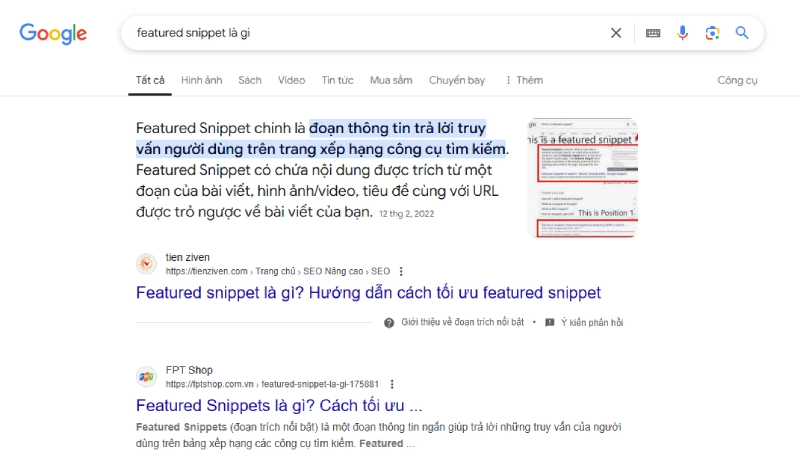
Why Optimize Your Website for Featured Snippets?
Improve Keyword Rankings Without Direct Competition
Featured Snippets allow your website to appear in the Top 0 position, even if the target keyword isn't ranked first in the organic search results. This means you can "outrank" strong competitors without investing heavily in traditional SEO ranking improvements.
-
Especially effective for long-tail keywords:
Long-tail keywords such as “How to optimize Featured Snippets for a website?” or “What are the benefits of Featured Snippets?” often have a high chance of triggering a Featured Snippet, enabling you to capture this spot even without ranking in the top three. -
Reduce competition pressure on SERPs:
Instead of competing intensely with industry rivals, focus on optimizing your content to fit the Featured Snippet format, leveraging the opportunity to appear in Top 0.
Increase Click-Through Rates (CTR)
Studies show that results displayed in Featured Snippets typically achieve 2-3 times higher click-through rates compared to results in the organic top three. This is due to their prominent format, easy readability, and ability to directly answer user queries.
- Impact analysis:
A well-optimized Featured Snippet not only increases traffic but also helps you better understand user behavior, improving other SEO strategies.
Build Brand Authority and Recognition
Appearing in Google’s Top 0 position not only increases your website's visibility but also establishes your brand's authority and credibility. When Google selects your content as a Featured Snippet, it signifies that your content delivers high value and aligns well with user intent.
Optimize for Voice Search
Approximately 40% of voice search results are currently sourced directly from Featured Snippets. With the increasing use of voice-activated devices such as Google Assistant, Alexa, and Siri, optimizing content to trigger Featured Snippets means expanding your reach to a new channel.
Enhance Cross-Platform Visibility
Featured Snippets are designed to display perfectly across all platforms – from desktop and mobile to voice search-enabled devices. This ensures your content stands out, regardless of the device used for the query.
Explore the 4+ Common Types of Featured Snippets
Paragraph
This is the most common type of Featured Snippet, often displayed to answer questions like “What is?”, “Why?”, or “How?” Google showcases a short paragraph, typically 40-50 words, extracted from the website's content.
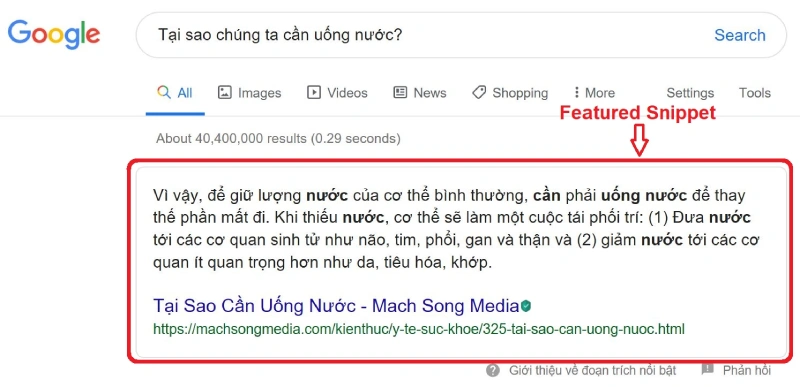
- Characteristics: Short, concise content that accurately answers the user's query.
- Example: When searching for “What is a Featured Snippet?”, Google may display a brief definition snippet from a relevant article.
Optimization Tips:
- Use question-based subheadings (H2, H3) such as “What is” or “Why” and provide a direct answer immediately below.
- Ensure answers are concise yet complete, using simple, clear sentences.
- Include target keywords in both the question and the answer.
List
This type of Featured Snippet appears when your content involves step-by-step guides or ranked lists, such as “How to optimize SEO” or “Top 10 SEO tools.”
-
Ordered List: Suitable for step-by-step queries, such as “How to bake bread at home.”
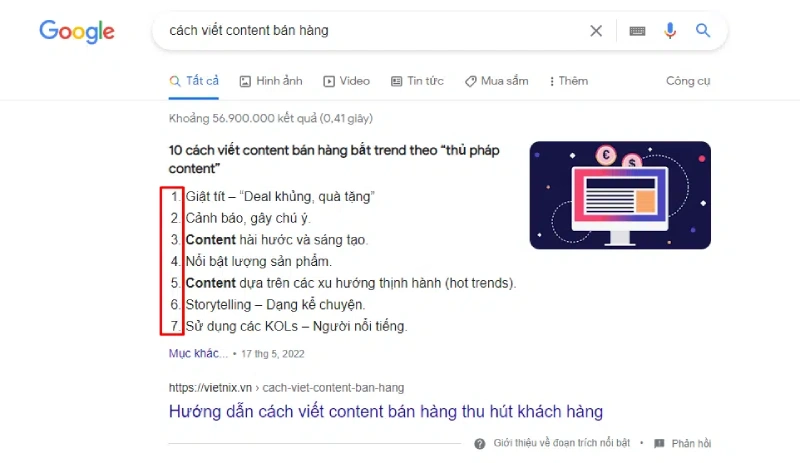
-
Unordered List: Typically used for ranking or list-based keywords, such as “Best free SEO tools.”
Optimization Tips:
- Use HTML
<ol>or<ul>tags to format the list clearly.- Ensure subheadings include the target keywords and describe the list's content.
Table
This type of Featured Snippet is highly useful when your content involves comparisons, presenting data, or statistics. Examples include “2025 smartphone prices” or “SEO tool performance comparison.”
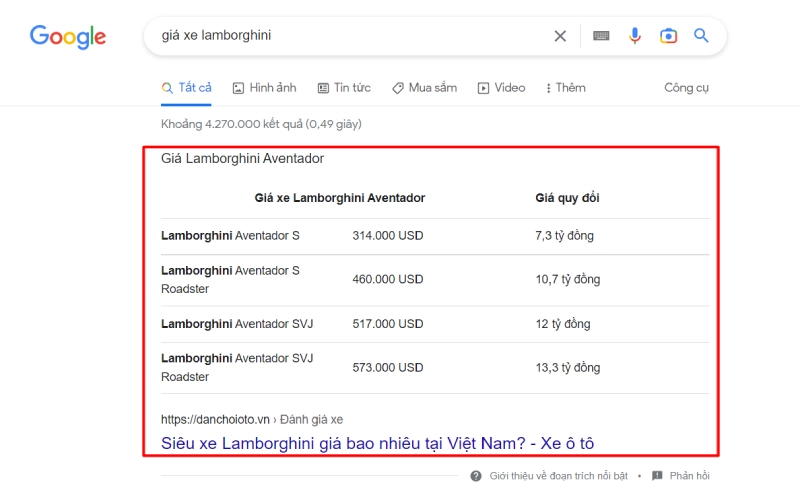
- Characteristics: Google extracts information from HTML tables or well-structured content with a similar format.
Optimization Tips:
- Use the
<table>tag to present data clearly in your content.- Focus on the accuracy and readability of the table.
- Add a clear title to your table and include relevant keywords.
Video
Video-based Featured Snippets often appear for queries requiring visual guidance, such as “How to install WordPress” or “How to care for bonsai trees.”
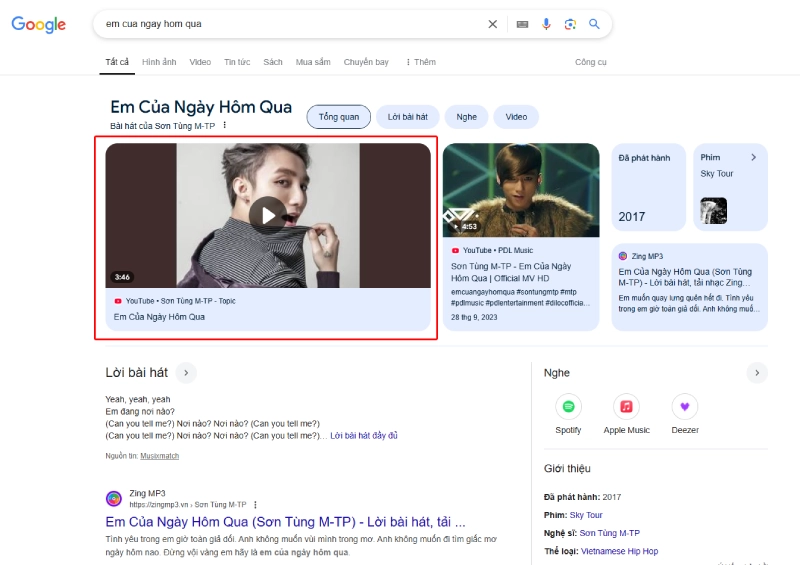
- Characteristics: Google prioritizes videos from YouTube or other credible platforms. Short, concise videos with clear messaging are more likely to appear.
Optimization Tips:
- Select appropriate keywords and include them in the title, description, and tags of your video.
- Add a transcript to make it easier for Google to understand the video content.
Image and Paragraph Combination
This type of Featured Snippet combines an illustrative image with a short paragraph. It’s common for queries requiring a visual explanation, such as “How to grow bonsai trees” or “How to fold clothes neatly.”
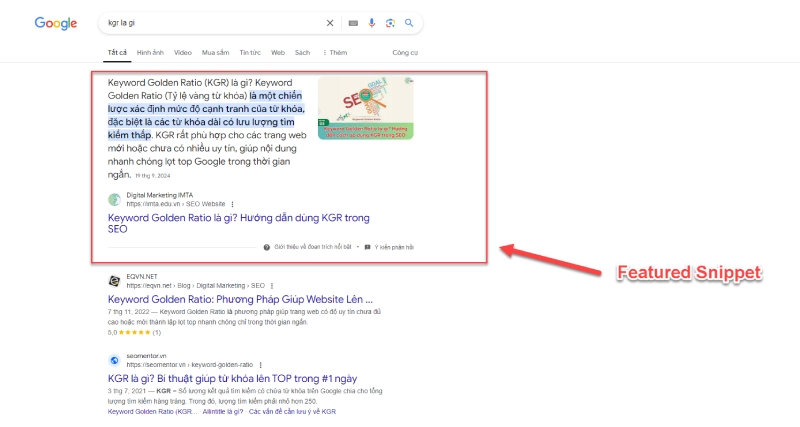
- Characteristics: Google selects a relevant image from your article and pairs it with descriptive text.
Optimization Tips:
- Use high-quality images with good resolution and include alt text containing relevant keywords.
- Ensure the image aligns with the content of the accompanying paragraph.
5-Step Process to Optimize Featured Snippets for SEO
Step 1: Analyze Potential Keywords
-
Identify Keywords with Featured Snippets:
Use tools like Ahrefs, SEMrush, or Google Search Console to filter out keywords where your website ranks in the top 10. Focus on those that already have Featured Snippets in the SERPs and prioritize those with high search volume and low Keyword Difficulty (KD). -
Target Keywords with Clear Intent:
Keywords in question format, like “What is Onpage SEO optimization?” or “How does a Featured Snippet work?” are more likely to trigger a Featured Snippet. Select these as primary targets. -
Focus on Long-Tail Keywords:
Long-tail keywords often face lower competition and are better suited for Featured Snippet responses.
Example: For the keyword “How to optimize Featured Snippets for articles?”, create detailed content explaining actionable steps.
Step 2: Identify the Right Featured Snippet Type for Your Keywords
Each keyword type usually aligns with a specific type of Featured Snippet. Categorize your target keywords to determine the appropriate format:
-
Paragraph:
Suitable for keywords asking “What is?”, “Why?”, or other queries requiring brief answers. -
List:
Ideal for keywords involving how-to guides or rankings like “Top 10 SEO tools.” -
Table:
Perfect for keywords involving comparisons, pricing, or statistical data. -
Video:
Useful for detailed or visual instructions like “How to cook pho at home.”
Pro Tip: Search for your target keywords on Google to see which Featured Snippet type is currently displayed, and optimize your content accordingly.
Step 3: Optimize Content to Fit Featured Snippets
-
Ask Questions and Provide Short Answers:
- Pose questions using H2 or H3 headings (relevant to your target keywords).
- Write short answers (40-50 words) that include the main keyword, placed immediately under the subheading.
-
Adapt Content Formatting:
- Paragraph: Write concise, easy-to-read content.
- List: Use HTML
<ul>or<ol>tags to clearly format lists. - Table: Present precise and readable data using
<table>.
-
Incorporate Related Keywords:
Naturally integrate primary and LSI (Latent Semantic Indexing) keywords into the body and subheadings.
Step 4: Optimize Onpage SEO and Technical Elements
-
Clear Article Structure:
Use logical H1, H2, H3 headings to divide content and ensure it’s easy to navigate. -
Add Schema Markup:
Include FAQ, How-To, or Table schema in your content to increase the chances of Google recognizing it. -
Improve Page Speed:
Faster-loading pages are more likely to be selected by Google for Featured Snippets.
Step 5: Track and Measure Results
-
Leverage Google Search Console:
Monitor keyword performance and analyze pages that have been optimized for Featured Snippets. Track traffic and rankings. -
Evaluate and Update Content:
If you lose a Featured Snippet to a competitor, analyze their content and revise your article to reclaim the spot. -
Regular Content Audits:
Periodically refresh information, improve formatting, and ensure your content aligns with current search intent.
Simple and Effective Featured Snippet Optimization Techniques
Optimize Existing Keywords Already Ranking in Top 10
If your website already ranks in the top 10 for a keyword, it’s in a prime position to win a Featured Snippet. Maximize this opportunity by refining your content to meet Google’s Featured Snippet criteria.
-
Analyze Potential Keywords:
Use tools like Ahrefs, SEMrush, or Google Search Console to pinpoint keywords ranking in the top 10, especially those already displaying a Featured Snippet in the SERPs. -
Focus on Current Featured Snippet Formats:
Identify the Featured Snippet type (paragraph, list, table, video) currently displayed and tailor your content accordingly.
Example: If Google displays a list, structure your content into clear steps using
<ol>or<ul>tags. For a paragraph, craft a concise answer (40-50 words) directly beneath a relevant heading.
Write New Content Targeting Featured Snippets
For untapped potential keywords, design content from scratch to compete for the Featured Snippet position:
-
Research High-Potential Keywords:
Keywords in question formats like “How?”, “What is?”, “Why?” or action phrases like “Guide, Optimize” are prime candidates for Featured Snippets. -
Structure Content Intentionally:
- Use subheadings (H2, H3) to pose questions and provide direct answers below.
- Cluster related keywords to prevent Keyword Cannibalization (internal competition for the same keyword).
Compete for and "Steal" Featured Snippets from Competitors
If competitors own Featured Snippets for your target keywords, analyze and improve upon their content to claim the spot:
-
Analyze Competitor Content:
Use tools like Ahrefs or SEMrush to examine the content triggering their Featured Snippet. Note their formatting, keyword usage, and depth of explanation. -
Enhance Your Content:
- Add more value by providing detailed explanations or supplementary visuals like images or videos.
- Use clear and accessible formatting with HTML elements such as
<ol>,<ul>, or<table>.
Comprehensive Onpage SEO Optimization
Beyond focusing on Featured Snippets, ensure your content meets overall Onpage SEO best practices:
-
Organize Content Clearly:
- Employ logical headings with H1, H2, H3 tags.
- Place the Featured Snippet answer immediately beneath its related heading for easier extraction by Google.
-
Optimize Meta Descriptions and Images:
- Write compelling meta descriptions with target keywords.
- Add alt text to images with relevant keywords for better visibility.
-
Implement Schema Markup:
Use FAQ, How-To, or Table schema to help Google understand your content better.
Key Notes for Featured Snippet Optimization
Ensure Keywords Rank in Top 10 on SERPs
Google only selects content from websites ranking in the top 10 to display as a Featured Snippet. Therefore, securing a top 10 position for your target keywords is a prerequisite. Focus on:
- Enhancing Content Quality: Provide detailed, accurate, and valuable information.
- Strengthening Onpage SEO: Optimize titles, meta descriptions, and article structure to align with Google’s algorithms.
- Building High-Quality Backlinks: Links from reputable sites will boost your keyword rankings.
Regular Monitoring and Updates
Featured Snippets are not fixed positions. Google can change the displayed content anytime based on criteria like content quality, search trends, or new algorithms. Therefore:
- Monitor Performance Regularly: Use Google Search Console to track keywords that have Featured Snippets and identify those with the potential to gain this position.
- Update Content: Frequently refresh articles to align with changes in user search intent.
Avoid Violating Google Policies
Content chosen for Featured Snippets must meet Google's criteria, including:
- Accurate Information: Ensure all data, figures, and information in the article are reliable and sourced.
- Avoid Misleading or Inappropriate Content: False or misleading content will disqualify your article from Featured Snippets.
- Follow Google Guidelines: Avoid black-hat SEO techniques or keyword stuffing.
Diversify Content Formats
Google prioritizes accessible content that matches user intent. Diversify your presentation to increase your chances of being featured:
- Use clear headings (H2, H3) to logically organize content.
- Create lists, data tables, or illustrative videos to enrich the article.
- Add high-quality images, especially for visually rich content.
How to Opt Out of Featured Snippets
While Featured Snippets offer numerous benefits, there are cases where you may want to prevent your content from appearing in this position. This might occur when:
- Content is unsuitable for a brief display: Some in-depth articles or premium content lose value if users only see a snippet without clicking through.
- Lower Click-Through Rate (CTR): For certain queries, a Featured Snippet may provide a complete answer, reducing traffic to your site and impacting SEO effectiveness.
How to Prevent Content from Appearing in Featured Snippets
If you'd like to block your content from being included in Featured Snippets, use the following methods:
-
Use the "nosnippet" meta tag:
Add the following code to the<head>section of the article to prevent Google from extracting content:<meta name="googlebot" content="nosnippet" /> -
Use the "data-nosnippet" tag:
Apply this tag to specific parts of the content that you don't want Google to extract:<span class="data-nosnippet">This content will not appear in the Featured Snippet.</span> -
Adjust Content Structure:
Avoid structuring content in question-and-answer formats or providing short, direct answers—these are often extracted by Google as Featured Snippets.
When Should You Block Featured Snippets?
- Content Requires Depth: If an article requires users to read it in full to understand the topic, displaying a short snippet may lead to misunderstandings.
- Exclusive Content Strategy: For high-value or proprietary content, you may want users to click through to access the full information.
Note: While blocking Featured Snippets might align with certain strategies, it's a decision that requires careful consideration, as it sacrifices opportunities to enhance visibility and organic traffic.
FAQs About Featured Snippets
Why Might a Featured Snippet Be Removed?
There are several reasons why Google might stop displaying content as a Featured Snippet, including:
- Violation of Google Content Policies: Content with misinformation, copyright violations, or non-compliance with community guidelines will be removed.
- Content No Longer Matches Search Intent: When user intent changes or other content provides better information, Google may replace the Featured Snippet.
- Algorithm Updates: New algorithms can alter the criteria for Featured Snippets, affecting your article.
Tip: To maintain your Featured Snippet position, regularly review and update content to ensure it remains accurate and aligned with user intent.
Are Featured Snippets Suitable for E-Commerce Sites?
Featured Snippets don’t directly drive sales but are highly effective for:
- Increasing Brand Awareness: If your e-commerce site provides guides, product reviews, or useful tips, Featured Snippets can enhance your credibility.
- Driving Users to Supporting Content: For example, an article titled “How to Choose the Best Coffee Maker” can lead users to the products you offer.
Note: For commercial content, combine guides, comparisons, or shopping tips to increase your chances of being featured.
What’s the Difference Between Featured Snippets and Rich Snippets?
-
Featured Snippets:
A highlighted excerpt that appears in the Top 0 position, providing direct answers to user queries. Examples: Text, lists, tables, or videos. -
Rich Snippets:
Enhanced search results appearing in the SERP, often including additional information such as star ratings, product prices, or images, but not in the Top 0 position.
| Criteria | Featured Snippet | Rich Snippet |
|---|---|---|
| Position | Top 0 | Any position on SERP |
| Purpose | Directly answers the query | Provides additional information |
| Format | Text, lists, tables, video | Reviews, prices, images |
How Long Does It Take to Appear in a Featured Snippet?
The time it takes for your content to appear in a Featured Snippet depends on:
- Content Quality: The content must be direct, concise, and address the search intent effectively.
- Frequency of Google Crawls: Well-structured and optimized pages can be quickly identified and extracted by Google, often within a few weeks.
- Keyword Competition: For highly competitive keywords, it may take longer, requiring your content to outperform competitors.
Tip: Use Google Search Console to monitor optimization progress and keyword performance.
Conclusion
Featured Snippets are an essential tool in the SEO 2025 strategy, offering maximum visibility, increased organic traffic, and reinforcing brand credibility on Google. Appearing in the Top 0 position not only captures user attention but also provides a significant competitive edge.
To optimize for Featured Snippets successfully, you should:
- Understand user search intent and provide direct, helpful answers.
- Optimize content for different Featured Snippet formats, such as paragraphs, lists, tables, or videos.
- Incorporate an On-page SEO strategy, create high-quality content, and use analytics tools to track performance.
However, remember that Featured Snippets are not static goals; they require ongoing optimization and updates. Focusing on delivering true value to users will not only help you maintain the Top 0 position but also enhance overall SEO performance.
Start today with a Featured Snippet optimization strategy to harness the full potential of this position and elevate your website to new heights!
Latest Posts

Lesson 26. How to Use break, continue, and return in Java | Learn Java Basics
A guide on how to use break, continue, and return statements in Java to control loops and program execution flow effectively.

Lesson 25. The do-while Loop in Java | Learn Basic Java
A detailed guide on the do-while loop in Java, including syntax, usage, examples, and comparison with the while loop.

Lesson 24. How to Convert Decimal to Binary in Java | Learn Basic Java
A guide on how to convert numbers from the decimal system to the binary system in Java using different methods, with illustrative examples.

Lesson 23. How to Use the While Loop in Java | Learn Java Basics
Learn how to use the while loop in Java with syntax, real-world examples, and practical applications in Java programming.
Related Posts

What is Domain Authority? 13-Step Guide to Improve DA Score for Your Website in 2025
Discover what Domain Authority is and its importance in SEO. A detailed guide on the 13-step process to effectively increase DA, from content research and technical optimization to building quality backlinks for a sustainable SEO strategy.

What is Page Authority? The Importance of Page Authority for SEO in 2025
Learn what Page Authority (PA) is and its role in SEO optimization to help improve your website's ranking on search engines in 2025.

What is Google Index? A Guide to 13 Ways to Speed Up Website Indexing in 2025
Discover what Google Index is and learn detailed guidelines on 13 effective ways to get your website indexed quickly and boost your SEO rankings on Google in 2025.
![What is Onpage SEO? 23+ Basic & Advanced Onpage Optimization Checklist [2025]](/blog-posts/seo-onpage/seo-onpage-thumb.jpg)
What is Onpage SEO? 23+ Basic & Advanced Onpage Optimization Checklist [2025]
Learn the concept of Onpage SEO and the 23+ basic to advanced Onpage optimization checklist to improve website quality and boost search rankings effectively.

